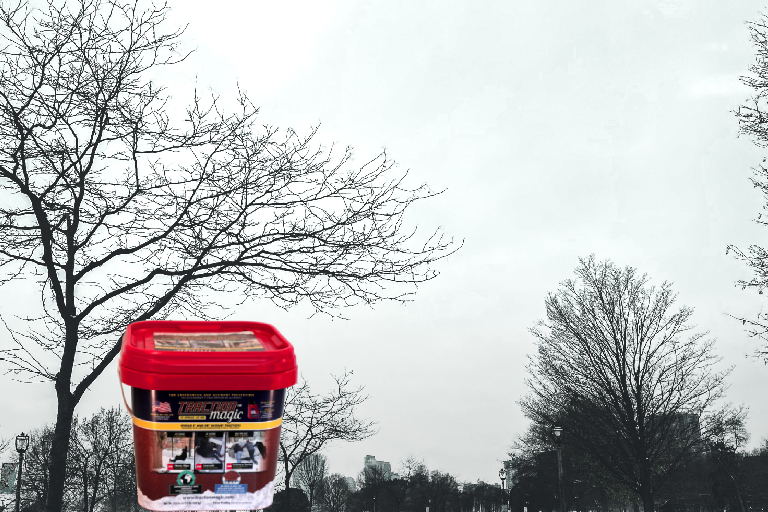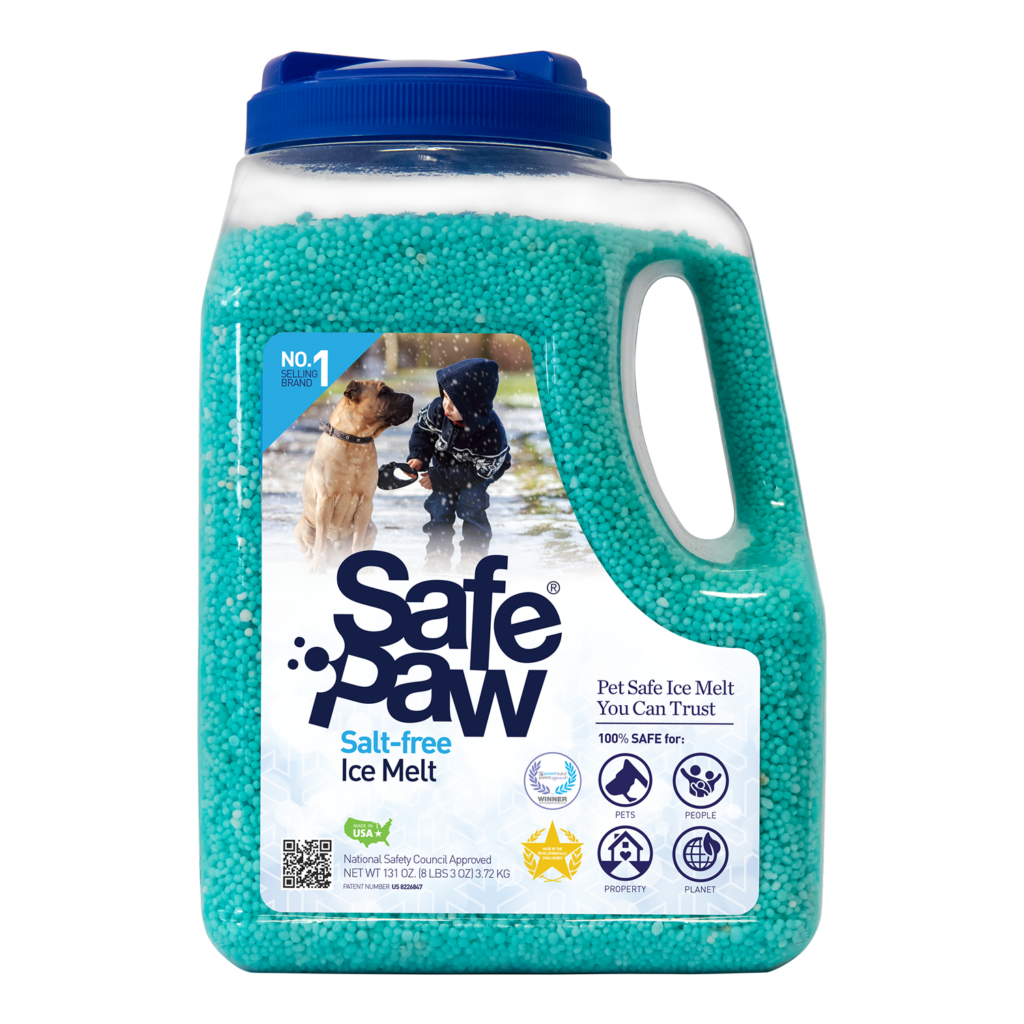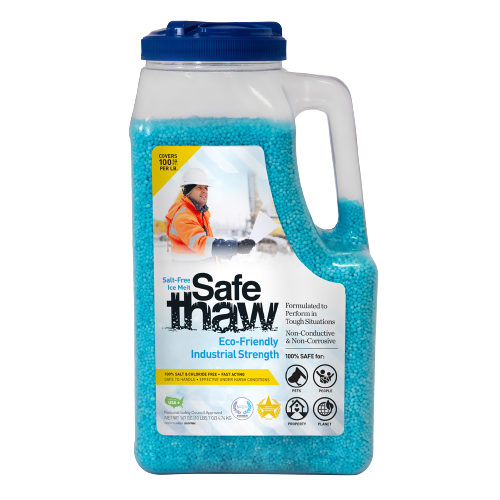The Process Of Black Ice Formation

The allure of winter lies in its pristine white snowscapes and shimmering frosted trees. However, beneath this enchanting facade lies a silent danger, often undetectable and always treacherous – black ice. Its very name denotes its elusive nature, making it a significant concern for drivers and pedestrians alike. To combat this hazard, it’s essential first to understand its formation and then, of course, to know how best to navigate it when you encounter it on the roads.
Get ready for winter with Traction Magic instant grip on snow and ice
The Elusive Nature Of Black Ice
So, how is black ice formed? The process is as fascinating as it is perilous. Unlike snow or sleet that provides visual cues, black ice often forms clear and smooth, making it blend seamlessly with the road surface. This transparency is what gives it the “black” descriptor, as it simply reflects the asphalt beneath.
Conditions Favoring Black Ice Formation
How is black ice formed? Black ice typically forms under specific conditions:
- Calm Nights: On clear, calm nights, the earth’s surface loses heat rapidly. If the temperature drops below the dew point and the ground is below freezing, then the moisture in the air will condense and freeze upon contact, leading to the formation of black ice.
- Melting and Refreezing: During the daytime, snow or ice might melt due to sunlight or other reasons. But as the temperature drops in the evening, the water refreezes, often forming a thin, clear layer of ice on roads and sidewalks.
- Overpasses and Bridges: These structures tend to freeze faster than regular roads because cold air can circulate above and below their surfaces. This makes them prime locations for black ice formation. Hope you have a better understanding now on- how is black ice formed.
Get ready for winter with Traction Magic instant grip on snow and ice
Navigating Black Ice Safely
Knowing how black ice forms is half the battle. The next step? Learning how to drive on black ice safely. Here are some essential tips:
- Anticipate Black Ice: Always be on the lookout for black ice in favorable conditions, especially during early mornings and late nights when temperatures are typically lowest.
- Maintain a Safe Speed: Speeding is a significant risk factor. Ensure you’re driving at a speed that allows you enough time to spot potential black ice patches and react.
- Avoid Sudden Actions: Braking suddenly or turning sharply can lead to skids. If you do find yourself on black ice, keep your steering steady and let the car decelerate naturally.
- Use Headlights: Even during the day, using your headlights can increase the chances of reflecting off any icy patches ahead, giving you a slightly better chance of spotting them.
- Equip Your Vehicle with ‘Traction Magic’: Before setting out, especially on routes known for frequent black ice formation, ensure you have a bag of ‘Traction Magic’ in your vehicle. This blend of natural volcanic rock and seven other minerals can be used to provide immediate traction, making it inval
Not only can it be used for your car, but sprinkling ‘Traction Magic‘ on sidewalks, steps, or any suspected icy area can ensure better footing for pedestrians. Its non-corrosive nature ensures it’s safe for property, and the natural ingredients ensure no harm to pets or humans.

Slip On Ice Cleats: Your First Line of Defense in a Blizzard
When a blizzard hits and the world outside becomes a frozen hazard zone, slip on ice cleats are an underrated but essential part of staying safe. These portable traction devices slip over your regular shoes or boots and offer immediate grip on icy surfaces. Whether you’re checking the mailbox or walking to the car during a storm, cleats prevent unexpected falls, especially on black ice.
But first, what is black ice on roads? It’s a nearly invisible layer of ice that forms when moisture—like snowmelt or rain—refreezes quickly on cold pavement. The name comes from its deceptive appearance: it looks just like a regular wet road but offers zero traction. In extreme conditions, black ice can form on sidewalks, driveways, porches, and roadways—essentially anywhere moisture lingers in sub-freezing temperatures.
And yes, will there be black ice tomorrow? is a question worth asking after every snowstorm. If temperatures are forecasted to fall overnight, any melting snow or slush can refreeze into a sheet of black ice. Slip on cleats can be a lifesaver in these conditions, especially for older adults or anyone needing to step outside during or after a blizzard.
How Slip On Ice Cleats and Vehicle Traction Work Together
While slip on ice cleats help you maintain balance, vehicle safety is just as important. Many drivers ask, should you turn off traction control in snow? The answer depends on the situation. Normally, traction control should stay on—it helps prevent your wheels from spinning out. However, if your car is stuck and you need to rock it back and forth, temporarily turning it off might help get you moving.
But remember, even with traction control, what is black ice cdl certified drivers worry about applies to everyone: black ice doesn’t care how skilled you are behind the wheel. CDL drivers (commercial drivers licensed to operate large trucks) are trained to recognize black ice hazards and know that no system can replace proactive safety.
To stay safe at home, consider using both slip on cleats for personal mobility and traction agents like ice Traction Magic for vehicles and walkways. It’s a two-pronged approach to beating black ice and staying upright.
Get ready for winter with Traction Magic instant grip on snow and ice
Conclusion
Blizzard safety isn’t just about stocking food and fuel—it’s about physical stability. From understanding what is black ice on roads to wearing slip on ice cleats and knowing should you turn off traction control in snow, preparation makes all the difference. Equip yourself and your property with the right tools, from natural traction agents to personal cleats, and you’ll be ready for whatever winter throws your way.
Other Ice Melt Products
Safe Paw
The Original and the #1 Pet and Child Safe Ice Melt for over 20 years. Guaranteed environmentally safe – will not harm waterways and sensitive wetlands. Safe Paw can change how winter affects our planet.

Safe Thaw
Imagine an ice melt you can put down and never worry about. It won’t harm pets, kids and your property. That’s Safe Thaw. Unlike anything else on the market, Ice and Snow Management You Can Trust.
